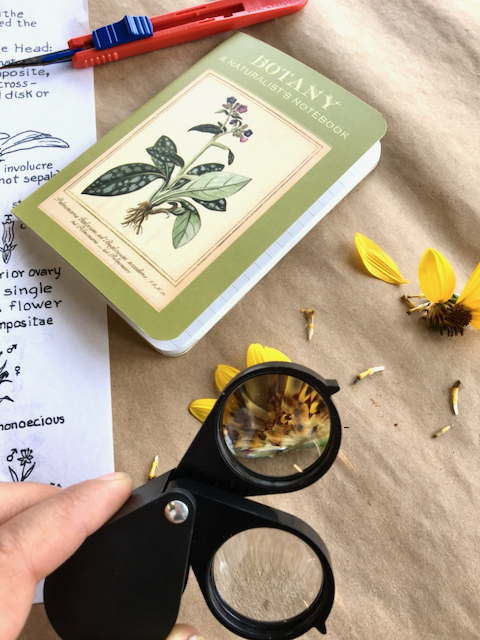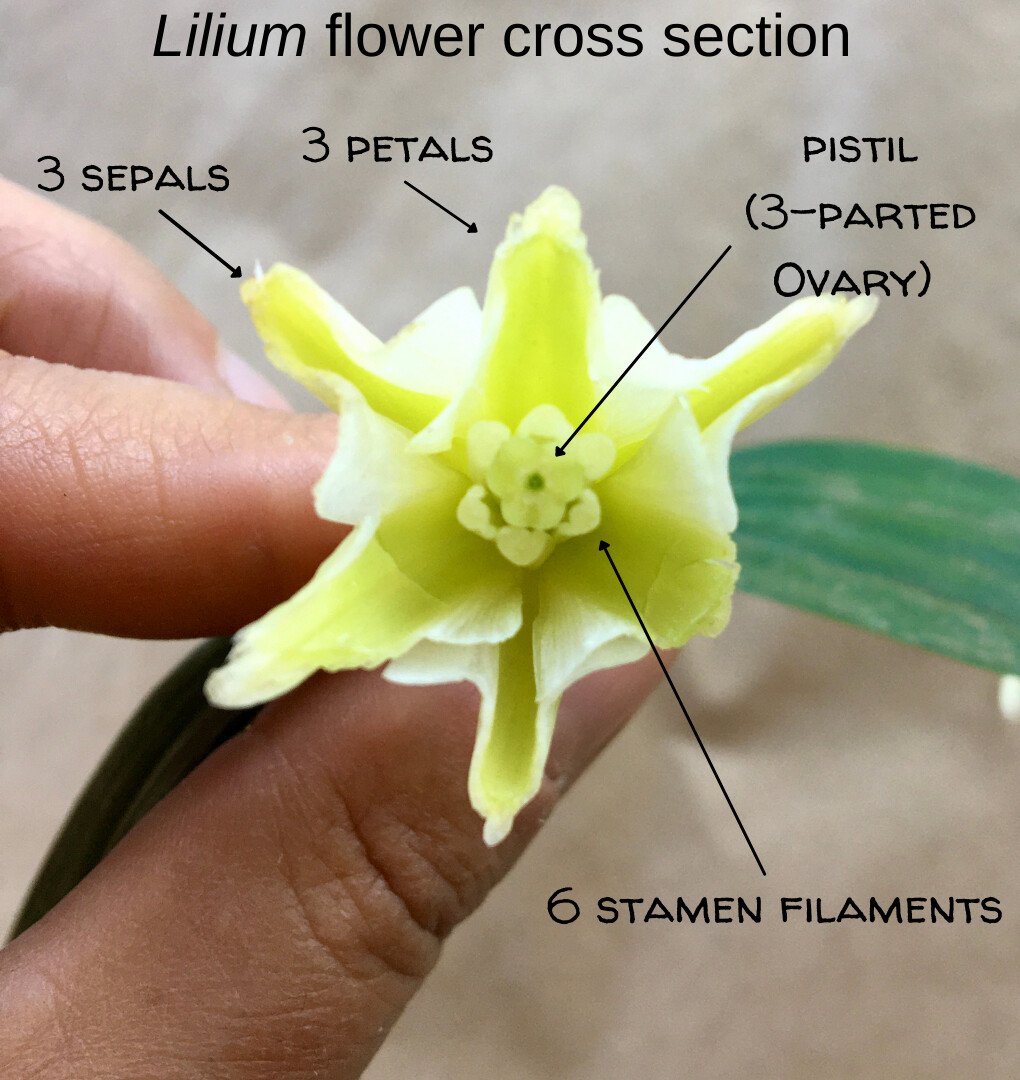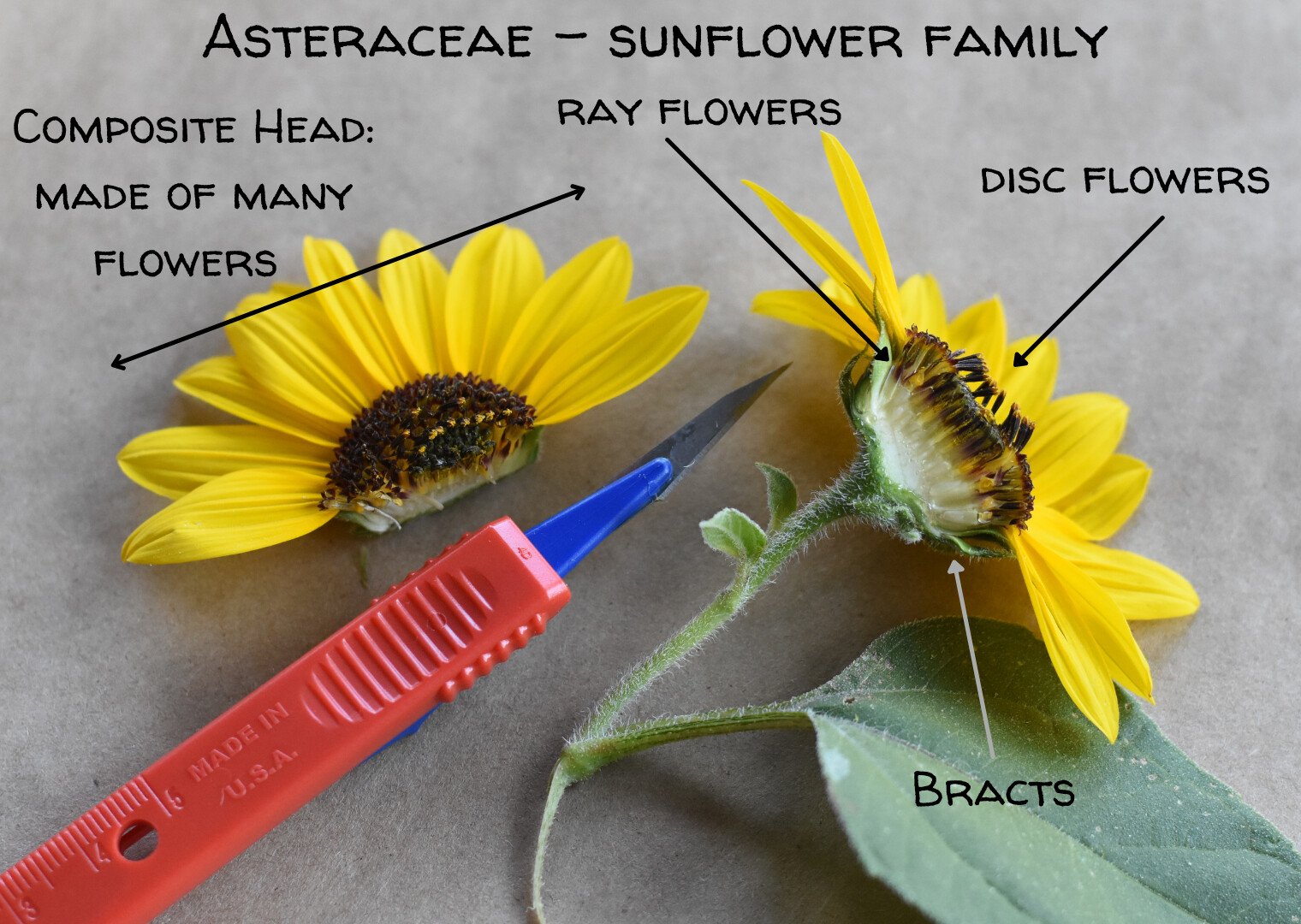Beginner Botany for Flower Lovers
If we could see the miracle of a single flower clearly, our whole life would change.
— Buddha
Have you ever seen a beautiful flower and wondered what it’s called or how to describe it? That’s botany! If you’re wondering how to get started in botany or where to start in beginner botany, this article is for you.
Taking time to study botany is useful for work in the floral industry, and it can be very rewarding. Careful observation of the flowers in your hand will open your eyes to the diverse and inspiring world of plants.
As florists and growers, we use flowers for their brilliant colors, myriad shapes, and sweet perfume. But flowers are far from purely decorative!
We often forget that flowers are the reproductive parts of plants—these beauties have been shaped by evolution to ensure pollination and produce fruits and seeds for the next generation. The more closely you study a flower and think of it in light of its biological purpose, the more complex and fascinating it becomes.
Ready to begin your studies? This article will cover the following:
What botany is
Plant names and classifications
Botany study lab
Anatomy of a flower
Examples of family Liliaceae (lily family) and family Asteraceae (aster family)
Resources for further study
What is botany?
Botany is, in its simplest definition, the scientific study of plants. This general area of study includes plant structure, physiology, classification, genetics, distribution, ecology, and economic importance.
For some, the technical terms and scientific names used in botany are a little intimidating. But it is helpful to think of botanical terms as another language. You don’t learn a language overnight. It takes time. Just like other skills, you will gain knowledge and experience little by little.
Plant Names and Their Classifications
The flowering plants are classified and named in accordance with the system devised by Carl von Linne over 300 years ago.
In this system, all plants belong to the plant kingdom, distinguished from the animals, fungi, and single-celled organisms. Kingdoms are divided into categories called phyla.
Each phylum is divided into classes, each class into orders, each order into families, each family into genera, and each genus into species.
Every “kind” of plant has a unique name that consists of its genus and species name.
These names must be written in Latin and italicized, for example, Helianthus annus, the annual sunflower.
To complicate things, species can be broken down further and given a cultivar name, consisting of the Latin botanical name followed by a cultivar epithet.
Cultivars are identified or bred for having notable characteristics, such as petal color or shape.
For example, you have probably seen the fluffy, fully double flowers of Helianthus annuus Teddy Bear or the richly colored petals of Helianthus annuus Procut Plum.
Learning scientific names can be intimidating at first, but think of how much easier it would be if everyone in the floral industry only used species and cultivar names?
“Learning scientific names can be intimidating at first, but think of how much easier it would be if everyone in the floral industry only used species and cultivar names?”
Common names are not standardized, sometimes making it difficult to know what you are really getting when you put in an order.
For instance, floral wholesalers mistakenly use the common name chamomile to describe the daisy-like flowers of feverfew or Tanacetum parthenium.
Don’t stress out over memorizing individual plant names at first.
For beginning botanists, a great place to start your studies is by learning the common characteristics of the major plant families. By studying the structure of flowers, you can learn to recognize patterns that are common to related groups of plants.
Botany Study Lab
Let’s dive into a few examples of flower structures for the families Liliaceae and Asteraceae. If you have access to some lilies or sunflowers, you can follow along by making your own observations.
Here is a list of tools that will help you get started, but keep in mind that all you really need are your eyes and hands and a flower!
Flowers (We will dissect lilies and sunflowers.)
Hand lens (I use a doublet hand lens with 5X-10X magnification.)
Razor blade or scalpel
Cutting board
Notebook and pencil
Flower identification guide or basic botany text
Anatomy of a Flower
The anatomy of a typical, simple flower is made up of four parts: sepals, petals, stamen (male part), and pistils (female part).
Sepals protect the rest of the flower when still in bud and can be green or the same color as the petals, like a lily. Petals come in just about every color and shape. The main purpose of the petals is to attract and guide specific pollinators to the stamen and/or pistils where pollination takes place.
The stamen, or male part of the flower, is composed of an anther filled with tiny pollen grains, held on a stalk called the filament.
“Petals come in just about every color and shape. ”
The pistil, or female part of the flower, is made of one or more ovaries at its base, extending out into a style and ending with the sticky stigma.
During pollination, pollen lands on the stigma, and microscopic sperm travel down the style into the ovary, where seeds develop.
Anatomy of a lily flower
Keep in mind that most people get a little frustrated when observing flower structures because they are small and seem anything but typical.
Parts may be fused, asymmetrical, or missing. Again, patience and experience will give you more and more confidence in recognizing the different parts.
Family Liliaceae (Lily Family): Dissection and Study
Members of Liliaceae all have flower parts in sets of three: three petal-like sepals, three petals, six stamen, and a three-parted stigma. The showy petal-like sepals, called tepals, are a characteristic shared by most members of the Liliaceae.
Many beloved cut flowers are Liliaceae: lilies, tulips, hyacinth, daffodils, allium, and amaryllis.
“Many beloved cut flowers are Liliaceae: lilies, tulips, hyacinth, daffodils, allium, and amaryllis.”
Dissecting the showy flowers of the Oriental hybrid lily, Lilium casablanca, is good place to begin because their flower parts are large. If you have a lily flower to dissect, first take a moment to look at how the flowers are arranged on the stem and try to identify the different flower parts of the whole flower.
Next, take a closer look at the stamens and stigma by taking off some of the sepals and petals.
Lilly flower cross section
There are two main ways to cut through a whole flower, either horizontal or vertical. It helps to have 2–3 flowers during your dissections so you can try both. In the photo, a horizontal dissection allows for a better view of the inside of the 3-parted ovary.
Family Asteraceae (Aster Family): Dissection and Study
Flowers of members of Asteraceae are much more complex than they seem. What looks like a single flower is actually a cluster of smaller flowers, collectively called a composite head.
Each head contains individual disc flowers in the center, surrounded by ray flowers on the outside. At the base of the head are layered bracts.
Anatomy of a asteraceae flower of the sunflower family
Members of the asteraceae family
There are too many members of the Asteraceae family used as cut flowers to list here. But some examples include sunflowers, asters, marigolds, dahlias, zinnias, chrysanthemums, cosmos, feverfew, yarrow, echinacea, gerbera daisies, goldenrod, and bachelor’s buttons.
Some common garden Asteraceae include lettuce, artichokes, thistles, and dandelions.
To take a closer look at the tiny flowers, choose a member of the Asteraceae with a large head, like sunflowers, cosmos, or zinnia. Use a magnifying glass to view the individual flowers.
By cutting a vertical cross-section, you can see the arrangement of the individual disc and ray flowers.
For further study, separate the flowers and try to identify the sepals, called a pappus (which can form awns, scales, or plume shapes), five fused petals, five fused stamen, and a stigma.
Cross section study of a dahlia flower composite head
Beginner Botany Resources for Further Study
Studying botany is a lifelong endeavor that will enrich your relationship with nature.
Step-by-step, flower-by-flower, you’ll slowly and surely gain knowledge about flowers that you can share with coworkers, family, and friends. Here are a few ways you can continue your botany studies:
Explore botanical gardens or herbaria. Many offer beginning botany classes!
Take books about wildflowers and local flora with you during walks and hikes.
Use discarded flowers for study and dissection.
Next time you bring a bucket of flowers out of the cooler or admire flowers in the garden, I challenge you to take a look at them in a different light. Be patient, observe carefully, and stay curious!













